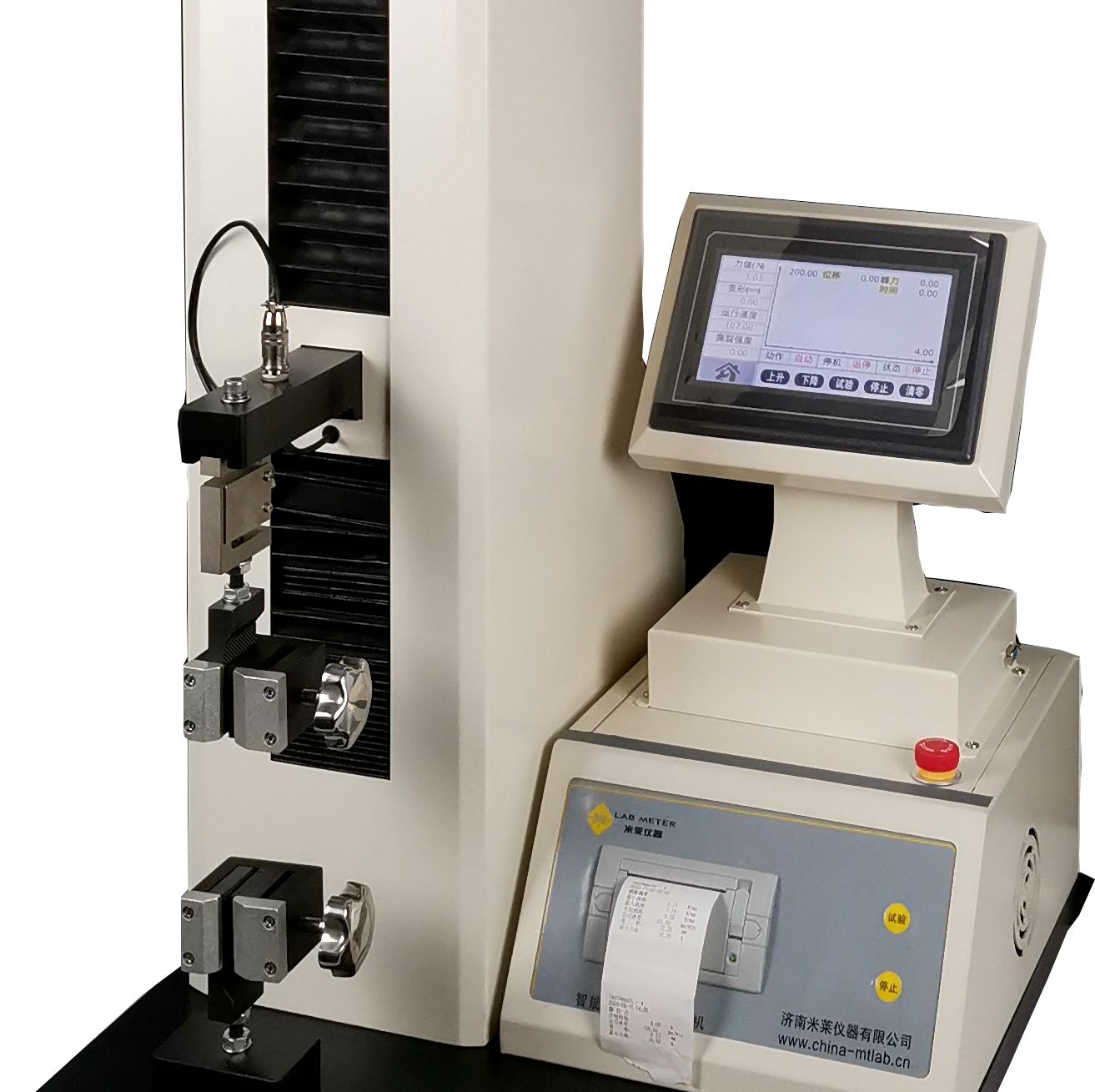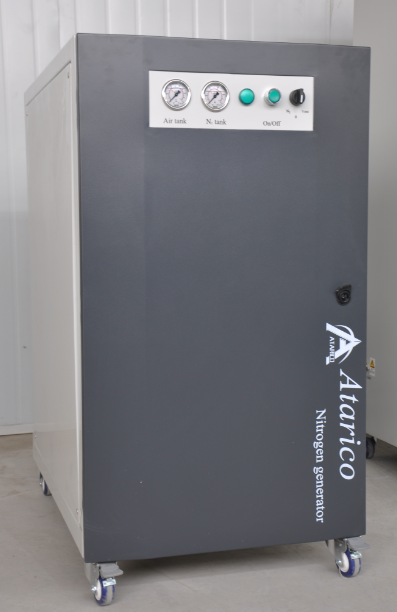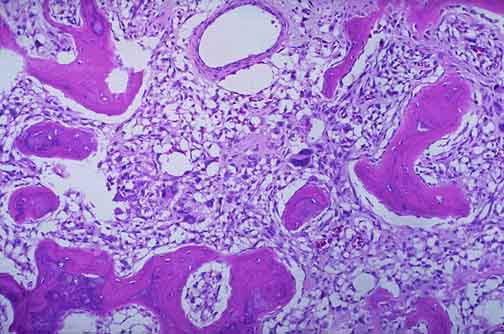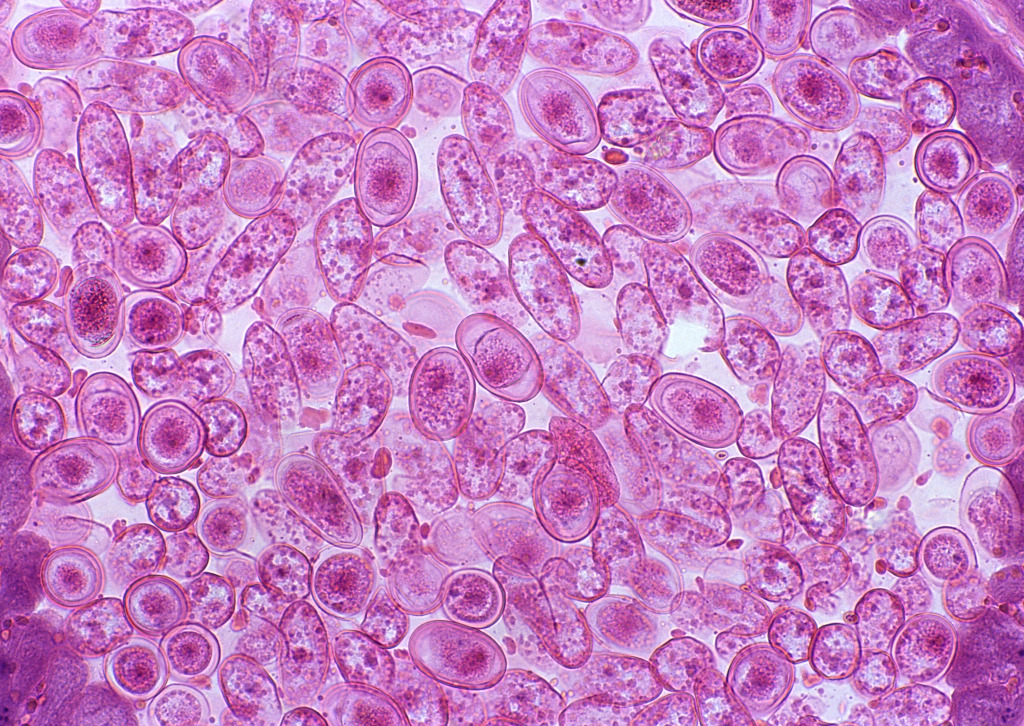Jacob Bornstein, M.D.,1,2 Gonen Ohel, M.D.,2,3 Yoram Sorokin, M.D.,4
Kathleen Z. Reape, M.D.,5 Oleg Shnaider, M.D.,1 Hadar Kessary-Shoham, Ph.D.,6 and Ella Ophir, M.D.1,2
ABSTRACT
We evaluated the ability of a testing panty liner (TPL) embedded with a pH/ammonia indicator polymer to differentiate amniotic fluid leakage from urine. A multicenter, open-label study in which 339 pregnant women (age 18 to 45 years, minimum 16 weeks’ gestation, presenting with unexplained vaginal wetness) were enrolled. The TPL was worn and the results read by the subject and a health care provider (HCP) who was blinded to the subject’s reading. Results were compared with the standard clinical diagnosis, as determined by direct visualization of vaginal pooling, crystallization (ferning), and nitrazine tests, performed by a second blinded HCP. Subject experience with the test was assessed with a brief questionnaire. The TPL accurately detected 154 of the 161 subjects found to have amniotic fluid leakage by the standard diagnosis; thus, the sensitivity of the TPL was 95.65%. The specificity was 84.46% (% true negative readings), as the TPL demonstrated a negative result for 125 of the 148 subjects whose clinical diagnosis was negative for amniotic fluid leakage. The overall agreement between the TPL readings of the clinician and that of the subject was 97.40%. The TPL is a reliable test to determine the presence of amniotic fluidleakage.
KEYWORDS: Amniotic fluid leakage, testing panty liner
Leakage of amniotic fluid during pregnancymay occur as a result of normal physiological processeswhen in labor, abnormally when it is preterm, or following amniocentesis.1,2 The risk of maternal intrauterine in- fection and possible vertical transmission of group B streptococci during labor or delivery increases with the duration of membrane rupture prior to delivery.1–3 Fetal risks with leakage of amniotic fluid include umbilical cord compression or prolapse and ascending infection as well as other factors related to gestational age and fetal status at delivery.2 Detection may be especially difficult if the leakage is slow or intermittent. Digital cervical examination may increase the risk of infection and should be avoided in preterm premature rupture of membranes.1 Other diagnostic methods include visual- ization of the posterior fornix of the vagina for pooling of amniotic fluid, use of nitrazine/pH paper to test vaginal secretions, microscopy to identify crystallization (ferning) of amniotic fluid, and immunoassay for the presence of placental a microglobulin-1 used aloneorin combination.1,4,5 Urinary incontinence and other sources of vaginal discharge fromvaginalinfections such as bacterial vaginosis and trichomonasvaginitismay confound the interpretation of resultsandmake the presence of amniotic fluid leakage difficulttodetect. An ideal diagnostic aid for the detection of amniotic fluid leak would benoninvasive,inexpensive,easytouse,easytoread,andavailable for use a thome to detect intermittent fluid leakage over a period oftime.Inaddition, it would provide high sensitivity,highspecif-icity, and could differentiate amniotic fluid from other sources of vaginal discharge or urinary incontinence. In a feasibility study to assess the effectiveness of a panty liner embedded with an indicator striptodetectamniotic fluid, investigators concluded that the panty liner (AL-SENSE panty liner;subsequently renamed Amni ScreenTM) was a highly sensitive method to determine amniotic fluid leakage.4 Thetestingpantyliner (TPL) was further evaluated in alarger,multi-center, open-label, prospective clinical trial to determine its ability to detect possible leakage of amniotic fluid in pregnant women with unexplained vaginal wetness.
MATERIALSANDMETHODS
Pregnant women (minimum 16 weeks』 gestational age) between the ages of 18 and 45 years old presenting to the labor and delivery triage area at each of the investigative sites and reporting a feeling of vaginal wetness (unde- termined if due to amniotic fluid leakage or urine) were eligible to participate in the study. Women with gross rupture of membranes were excluded; women in active labor were not excluded. A total of 339 subjects were enrolled between May 1, 2006 and November 22, 2006 in two centers in Israel (Western Galilee Hospital, Nahariya and Bnai-Zion Medical Center, Haifa) and one center in the United States (Wayne State Univer- sity/Hutzel Women’s Hospital, Detroit, MI). Informed consent was obtained from all participants. The institu- tional review board for each hospital approved the study protocol.
The AmniScreenTM (Common Sense, Ltd., Hesarea, Israel) TPL is comprised of a regular panty liner with an embedded test strip coated with a propri- etary polymer containing a colorimetric pH indicator, which immediately changes color from yellow to blue- green upon contact with fluids, such as amniotic fluid, with a high pH (Ç 5.2 units). Unlike nitrazine paper, the TPL distinguishes between amniotic fluid and urine by use of a polymer matrix that has a specific composition of ingredients that reverses the color change back to yellow by reacting to concentrations of ammonia exceeding 6 mM, such as urine, within 30 minutes (of drying time). The pH indicator is chemically bonded to a polymer and absorbed on polyester mesh that is inserted under two upper unidirectional absorption layers. There is no direct physical contact between the woman’s body and chemicals or the diagnostic component of the TPL. The TPL underwent tests to evaluate cytotoxicity, skin irritation, and sensitization and complies with the U.S. Pharmacopoeia Guidelines.4,6,7
Subjects were excluded from participation in the study if any of the following criteria were present: intermittent vaginal bleeding during the second or third trimesters, sexual intercourse within the past 12 hours, unable or unwilling to cooperate with study procedures, prior use of the TPL, diagnosis of bacterial vaginosis or trichomonal vaginal infection within the past 3 days, use of vaginal products or antibiotic treatments that reduce lactobacillus population, use of medications such as tamoxifen that reduce estrogen levels or antihistamines that dry mucous membranes, or consumption of alkal- izing foods (such as broccoli, beets, cabbage) that could elevate vaginal pH levels.
A healthcare provider (HCP) explained the proper use and handling of the TPL as well as how to read the results. Subjects remained in the hospital during the study assessment period. Subjects received a single TPL to wear for up to 12 hours or until vaginal wetness was noticed, at which point the TPL was removed and placed in a drying tray for 30 minutes. The subject then observed the TPL and recorded any color change. Independently, an HCP blinded to the subject’s result record also observed the TPL and noted any color change. After the TPL was used and read by first the subject and then by the first blinded HCP, evaluation for amniotic fluid leakage using standard diagnostic methods was performed by a second HCP who was blinded to the TPL results. The standard clinical diag- nosis was determined by performing a vaginal pooling test, ferning test, and pH test with nitrazine paper. A positive standard clinical diagnosis was defined as either a positive pooling test or positive results in both the ferning and pH/nitrazine tests. The results of the standard clinical diagnosis were compared with the subject’s reading of the TPL results and used to calculate the sensitivity and specificity of the TPL.
When the results of the subject reading of the TPL test were in agreement with the standard clinical diagnosis results (either positive or negative), no addi- tional testing was performed. However, in cases of a discrepancy between the TPL test and the standard clinical diagnosis results, the procedures were as follows: If the TPL was positive and standard clinical diagnosis was negative, the subject was evaluated to rule out the possibility of a vaginal infection (bacterial vaginosis or trichomonas vaginitis), and a second clinical assessment (pooling, ferning, pH/nitrazine tests) was repeated within 48 hours to determine a final clinical diagnosis. The presence of vaginal bleeding, bacterial vaginosis,or trichomonal discharge was likely to lead to a false- positive test (i.e., stain the TPL blue-green) and the stain would not reverse because, unlike urine, these fluids do not contain a high ammonia concentration. The result was deemed a false-positive if the TPL was positive, the standard clinical diagnosis was negative, and the subject had a positive diagnosis of bacterial vaginosis or trichomonas vaginitis. If the TPL was negative and clinical assessment results were positive, no further testing was needed. Any necessary treatment was based on the results of the standard clinical diagnosis and not on the results of the TPL test. The final clinical diagnosis was defined as positive when the standard clinical diagnosis was positive (positive pooling test or positive results in both the ferning and pH tests) either initially or when testing was repeated within 48 hours.
Participants completed a short questionnaire eval- uating their experience with the TPL and their under- standing of the results. The first three questions asked the subjects to rate the TPL on a scale of 1 to 5 regarding their understanding of how to read the results and the comfort of the TPL. Two questions evaluated subject comprehension of the results.
Statistical Methods
Although not directly comparative, this study was de- signed to demonstrate that the TPL was not inferior to the AmnioTestTM (nitrazine swab; Pro-Lab Diagnostics, Richmond Hill, ON, Canada) in its ability to detect possible leakage of amniotic fluid in pregnant women with unexplained vaginal wetness. The reported sensitivity and specificity values for the nitrazine swab are 91% and 73%, respectively.8–10 Thus, the goal of the study was to show that the TPL would demonstrate Ç 91% sensitivity and Ç 73% specificity.
In a small pilot study, the TPL demonstrated a sensitivity of 100% (for sample size estimation a con- servative estimate of 97% was used for sensitivity) and a specificity of 84%.4 A sample size for the current study was estimated for two separate noninferiority hypoth- eses, which are meant to be evaluated with one-sided exact binomial tests, assuming that sensitivity will be 97% to reject a null hypothesis that sensitivity is less than 91% with over 80% power; 100 positive women are required, and, assuming that specificity will be 84% to reject a null hypothesis that specificity is less than 73% with over 80% power, 90 negative women are required (PROC POWER with SAS software, version 9.1; SAS Institute, Cary, NC). In addition, based on an expected prevalence of amniotic fluid leakage (65%) along with a subject dropout rate of 20%, it was determined that 323 women would be required for the study.
Subjects with valid results from both the TPL and all three components of the standard clinical diagnosis were included in the per-protocol analysis set. These subjects served as the primary analysis cohort for inferences regarding effectiveness; however, a single analysis (TPL compared with final clinical diagnosis) using any evaluable data from the intent-to-treat cohort was conducted. The secondary endpoints compared the clinician’s reading to the final clinical diagnosis and evaluated the subject’s comfort level with the test.
The primary analysis, as defined in the protocol, compared the agreement between the subject reading of the TPL results and that of the final clinical diagnosis regarding the presence or absence of amniotic fluid. The primary endpoints were evaluated by constructing a 2 × 2 table comparing the subject reading of TPL results to the results of the clinical diagnosis. The sensitivity (% true positive) and specificity (% true negative) of the TPL were calculated from the table. Subject results were also compared with the standard clinical diagnosis, a conservative approach that is more representative of clinical practice, as the diagnostic tests (pooling, ferning, pH/nitrazine) are generally not repeated within 48 hours after a single episode of unexplained vaginal wetness.
The percentages of subjects assigning a positive score (rating of 4 or 5 out of 5) in the subject question- naire were calculated and are presented descriptively.
RESULTS
Of the 339 women who were enrolled in the study, 10 subjects were found to have violated the protocol exclusion criteria and were discontinued (six had had sex within the last 12 hours, one had used a vaginal product that could affect pH, one had bacterial vaginosis, one had intermittent bleeding between the second and third trimesters, and one did not complete her results form). An additional 20 subjects were removed from the out- come analysis as they did not complete one or more of the three required tests (pooling, ferning, nitrazine/pH) needed to determine a final clinical diagnosis.
There was no statistically significant difference in the exclusion rates between the three centers (p ¼ 0.33; x2 test). Demographic data and baseline medical information were summarized and are presented for all 339 subjects who signed informed consent between May 1, 2006 and November 22, 2006 (Table 1). Effectiveness data are presented for the per-protocol cohort (n ¼ 309).
Although distributions in several demographic parameters between the investigational sites were statistically significant, none were deemed clinically relevant (Table 1). The average gestational age of the participants in the study was 37.2 weeks (range 17 to 42 weeks』 gestation). This was the first pregnancy for ~37% of the women enrolled. The majority of women reported that they had never had a spontaneous abortion (63%), elective/therapeutic abortion (77%), or prior premature delivery (93%). Approximately 7% were taking antibiotics
| Table 1Demographics | |||||
| BnaiZion | Detroit | WesternGalilee | Overall | ||
| (n¼110) | (n¼50) | (n¼179) | (n¼339) | pValue | |
| Age,y(meanTSD) | 29.9T4.9 | 25.4T5.5 | 26.7T5.7 | 27.5T5.7 | <0.0001 |
| Country oforigin | — | — | — | — | <0.0001 |
| IsraelorU.S.(i.e.,local) | 77(70.0) | 48(96.0) | 161(89.9) | 286(84.4) | — |
| Other | 33(30.0) | 2(4.0) | 18(10.1) | 53(15.6) | — |
| Prior pregnancies, n(%) | |||||
| 1 | 33(30.0) | 13(26.0) | 81(45.3) | 127(37.5) | — |
| 2 | 30(27.3) | 12(24.0) | 30(16.8) | 72(21.2) | — |
| 3þ | 47(42.7) | 25(50.0) | 68(38.0) | 140(41.3) | — |
at the time of enrollment. Per the study protocol, 4% had a vaginal smear to rule out bacterial vaginosis or trichomonas vaginitis if the TPL result was positive and the standard clinical diagnosis was negative.
The primary outcome analyses were conducted on those subjects who had TPL test results and had completed all three tests required for the standard and final clinical diagnoses (n ¼ 309); comparisons were made between the subject reading of the TPL results and the results of both the standard and final clinical diagnoses. In most cases (286/309, 92.6%), there was agreement between the TPL results and the standard clinical diagnosis, so it was not necessary to repeat the clinical diagnosis within 48 hours (per the protocol, if there was agreement, the standard clinical diagnosis served as the final clinical diagnosis). Of the 23 cases where there was a mismatch between the TPL results and the standard clinical diagnosis, four were diagnosed as positive at the final clinical diagnosis and 19 were considered false-positives. Of the 309 subjects in the per-protocol analysis, 161 were diagnosed with amniotic fluid leakage by the standard clinical diagnosis and 148 were negative. The sensitivity (% true positive) of the TPL based on the subject’s reading and confirmed by standard clinical diagnosis was 95.65% (154/161). The specificity (% true negative) of the TPL of the subject’s reading was 84.46% (125/148). The positive predictive value, or the probability that the subject with a positive test was a true positive and had amniotic fluid leakage, was 87.0%. The negative predictive value, or the probability that a subject with a negative result did not have amniotic fluid leakage, was 94.7%.
As would be expected, relating the subject reading of the TPL to the final rather than the standard clinical diagnosis resulted in very similar levels of sensitivity (95.76%, 158/165) and specificity (86.81%, 125/144), because the standard clinical diagnosis served as the final clinical diagnosis in more than 90% of the subjects. The null hypothesis for sensitivity (that sensitivity is less than 91%) was rejected, as the p value for the one-sided binomial test was 0.02, with the conclusion that the sensitivity of the subject reading of the TPL (compared with the final clinical diagnosis) was significantly higher than 91%. The null hypothesis for specificity (that specificity is less than 73%) was rejected, as the p value for the one-sided binomial test was less than 0.0001, with the conclusion that the specificity of the subject reading of the TPL (compared with the final clinical diagnosis) was significantly higher than 73%. The results of the single primary outcome analysis conducted on the intent- to-treat cohort, which included all subjects with any evaluable data (but not all three required diagnostic tests—pooling, ferning, nitrazine/pH [n ¼ 322]), and compared the subject reading of the TPL to the final clinical diagnosis, were also similar (sensitivity ¼ 95.40%, specificity ¼ 85.81%), supporting the effectiveness find- ings from the cohort of subjects completing all three required tests. The Kappa statistic between the subject readings and the final clinical diagnosis was 0.83 (95% confidence interval [0.768, 0.892]), which indicates excellent overall agreement between the subject reading of the color change of the panty liner and the final clinical diagnosis.11
The clinician assessments of the TPL results were compared with the final clinical diagnosis. The sensitivity of the TPL based on the clinician reading compared with the final clinical diagnosis was 95.78%, and the specificity was 88.11%. The Kappa statistic between the clinician’s reading and the final clinical diagnosis was 1.84(95% confidence interval [0.7823, 0.9029]), which indicates very high agreement between the two. The overall agreement between the TPL reading by the clinician and by the subject was 97.40%, with a 95% exact binomial confidence interval of [94.95%, 98.87%]. From the lower confidence limit, it can be concluded that the agreement level was at least 90%. The Kappa statistic between the clinician reading and subject reading of the TPL results was 0.947 (95% confidence interval [0.911, 0.983]), which indicates very high agreement.
The participants were requested to complete a brief questionnaire to evaluate their experience with the TPL and to assess their understanding of the results of the color change on the strip. Almost 100% responded that the blue-green stain on the strip was clear (73/309)or very clear (234/309) to distinguish and that the results were clear (112/309) or very clear (193/309). Two-thirds of the participants responded that they were comfortable or felt no discomfort (206/309) when using the TPL. Two women reported that they felt very uncomfortable using the TPL, although they noted that this was similar to what they felt when using any regular panty liner. The remaining respondents were indifferent (101/309). Approximately half of the women stated that they understood that the cause of wetness was due to amniotic fluid leakage. The last question assessed the subject’s interpretation of the results if the color change faded and disappeared. A large proportion of the women did not respond to this question, and many others were unsure of how to interpret the TPL findings.
There were no statistically significant differences in sensitivity between the study centers. However, a statistically significant difference (p ¼ 0.02) was observed in specificity between study sites due to a lower value at the Detroit site (69.23%) compared with the centers in Bnai Zion (92.11%) and Western Galilee (90%). This difference in specificity between sites may be explained by the rate of false-positive results due to vaginal infections. Of the 15 women at the Detroit site who tested negative for amniotic fluid leakage by standard clinical diagnosis, 23% (n ¼ 6) were found to have bacterial vaginosis or trichomonas vaginitis. There were no adverse events related to the use of the TPL reported during the course of this study.
DISCUSSION
Prompt, accurate diagnosis of amniotic fluid leakage may reduce trips to the hospital and patient anxiety. Often, an amniotic leak may be slow or intermittent, so a diag- nostic aid that can be self-applied at home, collects amniotic fluid continuously, and does not require vaginal exams could potentially be helpful as an adjunct to clinical exams in reducing hospitalization for observation or evaluation of suspected amniotic fluid leakage.
The results of this study indicate that the TPL was a sensitive tool for excluding ruptured membranes and for differentiating amniotic fluid leaks from other sources of vaginal discharge or urinary incontinence. The TPL can continuously collect fluid over time, compared with other diagnostic tests that evaluate fluid leakage at a single point in time with the woman in a supine position.
In this study, the specificity at the investigative sites in Israel was ~90%. The specificity at the study site in the United States was significantly lower, which could be attributed to the number of women with previously undiagnosed bacterial vaginosis or trichomonas vaginitis and false-positive results due to these vaginal infections. The pH of vaginal discharge secondary to bacterial vaginosis or trichomoniasis may exceed 5.0, leading to a color change from yellow to green on the TPL
indicator strip and a false-positive result.12,13 In the United States, the prevalence of bacterial vaginosis varies from 10 to 40%.14–16 Moreover, bacterial vaginosis prevalence varies with age, race or ethnicity, education, and economic status.16 It should be noted that demo- graphic data collected for this study did not include race. Although the prevalence of bacterial vaginosis and trichomonas vaginitis can introduce variability in the specificity of the TPL, the detection of vaginal infection in pregnancy due to false-positive results can be clinically valuable information.
In this study, the TPL correctly detected 154 of 161 cases of amniotic fluid leak; the seven cases that were missed could have been due to a large volume of urine leakage that covered all of the area stained by the amniotic fluid. The standard clinical diagnosis in the study missed four cases of amniotic fluid leak, probably due to intermittent amniotic fluid leakage. Therefore, under the conditions of the study in the hospital setting, the sensitivity of the TPL was similar to that of the standard clinical diagnosis. It was not feasible to conduct the study in the subjects』 homes; this study was con- ducted in a hospital-based labor and delivery triage setting because that is where women with unexplained vaginal wetness would be most likely to present and it is where the clinical diagnostic tests could be reliably performed in a standardized fashion. However, the methods utilized in the study were designed to replicate the same steps that a woman would go through if using the TPL at home. Overall, there was a very high level of agreement in comparing the reading of the results between the subjects and the clinicians, which suggests that the TPL is suitable for use as a home test.
The responses on the subject questionnaire in- dicate that the majority of subjects thought the TPL was comfortable to use and the results were easy to read. The answers to the questions as well as the subjects』 actual reading of the test demonstrate that women can success- fully interpret the results.
In conclusion, this study confirms the findings of the previous feasibility study and demonstrates that the TPL is a highly sensitive, nonintrusive method to detect the presence of amniotic fluid. False-positive results may occur in women with bacterial vaginosis or trichomonas vaginitis experiencing vaginal discharge; however, that information may be useful for the management of the pregnancy. The TPL is suitable for use in the outpatient setting, as the results are easy for the subject to read and understand.
ACKNOWLEDGMENTS
The study was supported by CommonSense, Caesarea Industrial Park, Israel. Duramed Research (Bala Cynwyd, PA) provided support for editorial services associated with the development of the manuscript.The data contained in this manuscript was accepted in abstract form to the American College of Obstetricians and Gynecologists Annual Meeting 2008.
REFERENCES
1. American College of Obstetricians and Gynecologists (ACOG) Practice Bulletin. ACOG Committee on Practice Bulletin No. 80: premature rupture of membranes. Clinical management guidelines for obstetrician-gynecologists. Obstet Gynecol 2007;109:1007–1019
2. Mercer BM. Preterm premature rupture of the membranes: current approaches to evaluation and management. Obstet Gynecol Clin North Am 2005;32:411–428
3. American College of Obstetricians and Gynecologists. ACOG Committee Opinion: number 279, December 2002. Prevention of early-onset group B streptococcal disease in newborns. Obstet Gynecol 2002;100:1405–1412
4. Bornstein J, Geva A, Solt I, et al. Nonintrusive diagnosis of premature ruptured amniotic membranes using a novel polymer. Am J Perinatol 2006;23:351–354
5. Cousins LM, Smok DP, Lovett SM, Poetler DM. AmniSure placental alpha microglobulin-1 rapid immunoassay versus standard diagnostic methods for detection of rupture of membranes. Am J Perinatol 2005;22:317–320
6. Section 5.510(k) Summary. AmniScreenTM Home Detection Liner Kit. Available at: http://www.fda.gov/cdrh/pdf7/ K071100.pdf. Accessed June 4, 2008
7. AmniScreenTM Home Detection Liner. Prescribing Infor- mation. Duramed Pharmaceuticals, Inc. Available at: http://
www.amniscreen.com/hcp/about_amniscreen.aspx. Accessed June 4, 2008
8. Watanabe T, Minakami H, Itoi H, Sato I, Sakata Y, Tamada
T. Evaluation of latex agglutination test for alphafetoproteinin diagnosing rupture of fetal membranes. Gynecol Obstet Invest 1995;39:15–18
9. Garite TJ, Gocke SE. Diagnosis of preterm rupture of membranes: is testing for alpha-fetoprotein better than Ferning or Nitrazine? Am J Perinatol 1990;7:276– 278
10. Kishida T, Hirao A, Matsuura T, et al. Diagnosis of premature rupture of membranes with an improved alpha- fetoprotein monoclonal antibody kit. Clin Chem 1995;41: 1500–1503
11. Fleiss JL, Levin B, Cho Paik M. Chapter 18: The measure of interrater agreement. In: Statistical Methods for Rates and Proportions, 3rd Ed. Hoboken, NJ: John Wiley and Sons; 2003:598–605
12. Riordan T, Macaulay ME, James JM, et al. A prospective study of genital infections in a family-planning clinic: microbiological findings and their association with vaginal symptoms. Epidemiol Infect 1990;104:47–53
13. Eschenbach DA, Hillier S, Critchlow C, Stevens C, DeRouen T, Holmes KK. Diagnosis and clinical manifes- tations of bacterial vaginosis. Am J Obstet Gynecol 1988;158: 819–828
14. Hillier SL, Nugent RP, Eschenbach DA, et al. Association between bacterial vaginosis and preterm delivery of a low-birth-weight infant. The Vaginal Infections and Prematurity Study Group. N Engl J Med 1995;333: 1737–1742
15. Koumans EH, Markowitz LE, Hogan V. CDC BV Working Group, Indications for therapy and treatment recommenda- tions for bacterial vaginosis in nonpregnant and pregnant women: a synthesis of data. Clin Infect Dis 2002;35(suppl 2): S152–S172
16. Allsworth JE, Peipert JF. Prevalence of bacterial vaginosis: 2001–2004 National Health and Nutrition Examination Survey data. Obstet Gynecol 2007;109:114–120









评论